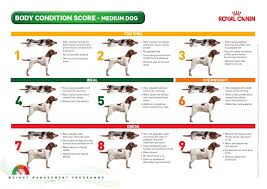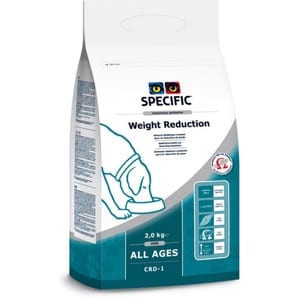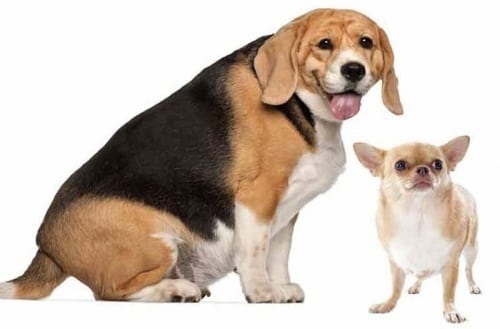Some facts:
According to research by Royal Canin more than 1in 3 dogs and cats in the UK & Ireland are overweight. From this research we know that 66% of pet owners do not perceive that their pet is overweight, and 80% of owners underestimate their pets body condition. It has been found that owners who use measuring cups, without initially weighing the food, overfeed their dogs in 80% of cases. As vets we see this in our consulting rooms everyday.
What harm does this excessive fat do?
Excessive weight doesn’t have an impact only on your pets behaviour, but on its health. Overweight pets do not want to play and exercise, they just want to eat more and sleep. The health problems due to being overweight, isn’t a short list nor a list to be taken lightly. The fat in your pets body isn’t just an estetic problem, but is metabolically active and supports any inflammation in the body. Overweight pets show more, and worse joint and bone problems, and show them earlier in life than pets with the ideal body weight and Body Condition Score (BCS). Heart problems, respiratory problems, high blood pressure and diabetes are amongst the most common health problems that overweight pets develop. Even if your dog is only 20% overweight, it increases their risk of developing heart disease, diabetes mellitus or bladder stones. For example if your dog is supposed to be 10 kg, and it is 12 kg, he is at risk of developing these health problems.
The most common question owners ask vet’s is?
What is the ideal weight for my pet? Well, there isn’t exact number which we can provide. Of course their are breed guidelines for their ideal weight but these do not consider individual pet variety and of course our beloved mixed breeds. Hence we as vets and vet nurses prefer to look at our patients weight along with a measurement called Body Condition Scoring (BCS).
So as a guideline you need to be able to see your pets waist line when looking down on them from above, and ribs and spine need to be easily felt but not seen. Not pushing through Layers to feel. and their abdomen should tuck up so it sits higher than their chest when they are looked at from the side.


If you want to get back on the track with your pets weight and health, the first step is to choose the right diet. Diets for weight reduction have higher fibre and protein content and lower energy content. Your pet will have a feeling of satiety longer, but not a surplus of energy that is usually converted and stored as fat. This diet will only take you 70% of the way to a healthy pet weight. Exercising with your pets, taking them for walks and playing with them so they expend any extra energy, and use more energy than they are consuming in the weight loss phase. Make them “work for their food” through games and toys. Spend time on daily basis occupying your pet, so they won’t go for food as result of boredom.



Most important is not to over feed our pets. Food bags have guidelines on how much food your pet should be getting on daily basis for his weight. Don’t forget that treats are also food even though we don’t recognize them as such. And you need to compensate for them in your daily feeding regime. If you add treats in something else must be cut out or more exercise put in. If you have any concerns about your pet’s weight, you can always give us ring at Clare Street Vets or Shannon Vets and we can advise you accordingly.

